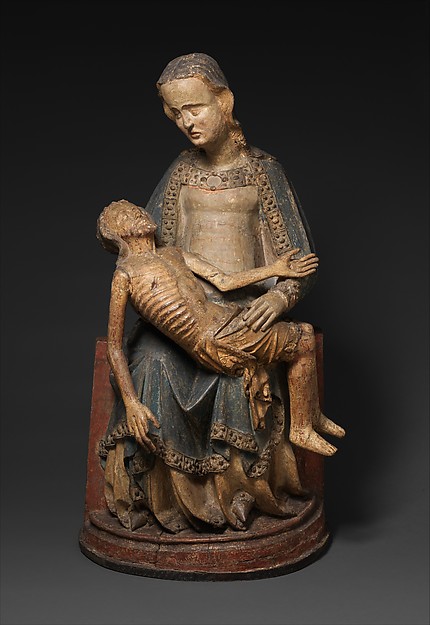
A German depiction of the Pietà, c. 1375–1400
Renaissance genius Michelangelo (1475-1564) was born on March 6 in Caprese, Italy. He was a painter, sculptor, architect, poet and visionary best known for his fresco on the ceiling of the Sistine Chapel and his sculptures David and The Pieta.
The Pietà (“pity”) was an image designed to provoke pity and charity among the viewers. The Virgin Mary holds the dead body of her son, Jesus, on her lap. She is often identified as an altar in these images, especially the ones in which her knees are spread wide to support the body of Christ stretched out across them, because her lap–draped with her gown and veil–looks similar to the rectangular altars in medieval and Renaissance churches which were also draped with brocade during the celebration of the Eucharist. The offerings viewers make in response to the image–food for the hungry, clothes for the naked, medicine for the sick–are identified with the offering of the Virgin’s son on the Cross and on the altars.
In some places, gifts of wheat were made to churches in honor of the Pietà image. The wheat would be used to make bread for the poor as well as bread for the Eucharist. Jesus, a dead body but identified as the Bread of Life on the lap of his Mother, is awaiting the Resurrection. The viewers who make these gifts of wheat are likewise awaiting their own opportunity to share the Resurrection and hope that their gifts will move Christ to judge them mercifully, with pity.
Festivals in honor of the Pietà image grew in popularity in the 12th century in German-speaking areas. One was especially popular in Cologne in 1423 and was held on the Friday after the third Sunday after Easter. During the sixteenth century these festivals spread through areas in North Germany, Scandinavia, and Scotland. By the early 1700s, the Pietà festival was common throughout Western Europe.
